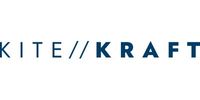
Less Material
Our systems need 10x less building materials compared to conventional wind turbines of the same power rating. Small system sizes do not even require a concrete foundation.
Low Cost
Drastic material reduction and on-ground setup and maintenance are the main drivers for cost reduction. This allows our technology to provide utility-level low-cost wind power already at small-scale and even lower cost at megawatt-scale.
Almost Invisible
Thanks to their compactness and their increased operational height our flying kites are barely visible. This reduces visual obstructions and public opposition, easing project realization.
Clean
We can cut the carbon footprint of wind energy by 90%, because a flying wind turbine requires only a fraction of the materials compared to conventional wind turbines but has the same life span.
Recyclable
Our kites are mostly made of aluminum which can easily be recycled, much better than carbon or glass fiber reinforced plastics, the material conventional wind turbines are mostly made of. Leaving no burden for the future.
Simplified Logistics
Our kite systems are very compact and can be packed in standard shipping containers. This reduces logistics costs and opens up new locations which were previously inaccessible for conventional wind turbines.
Higher Energy Density
Due to smaller wakes and swarm intelligence our systems can harvest up to 3 times more energy per area in wind park arrangements than conventional turbines.
Adaptability
Our systems can be integrated into any kind of (micro-) grid or function as a single source of energy. Synergies with existing infrastructure further reduce project costs.
Simple Setup
No heavy equipment or highly specialized rigging personnel needed for construction and maintenance.
Resting Position
During no wind, maintenance, or storms the kite rests on the landing perch on the ground station. While parked, the kite power system is practically invisible.
Take-Off
During take-off and landing the on-board electrical machines are used to hover the kite in the air–like a drone. While hovering away from the ground station in a down-wind direction, the tether is unrolled from a drum. The same procedure–simply reversed–is used to land the kite. The kite is landed during wind calms, or for inspections.
Transition
Once the tether is completely unrolled, the kite initiates a vertical acceleration. With increased speed the wings start to generate lift. Once it has reached sufficient height and speed, it enters figure eight flight mode.
Figure Eight Flight
This is the flight mode the kite will be engaged in most of the time. Flying figure eights in a down-wind position from the ground station, the kite`s wings generate lift and push the kite forwards like the blade-tips of a conventional wind turbine. The on-board rotors are now used as wind turbines and generate electrical power. The power is transmitted to the ground station via the tether. Here it can be stored in batteries or fed into the grid.
